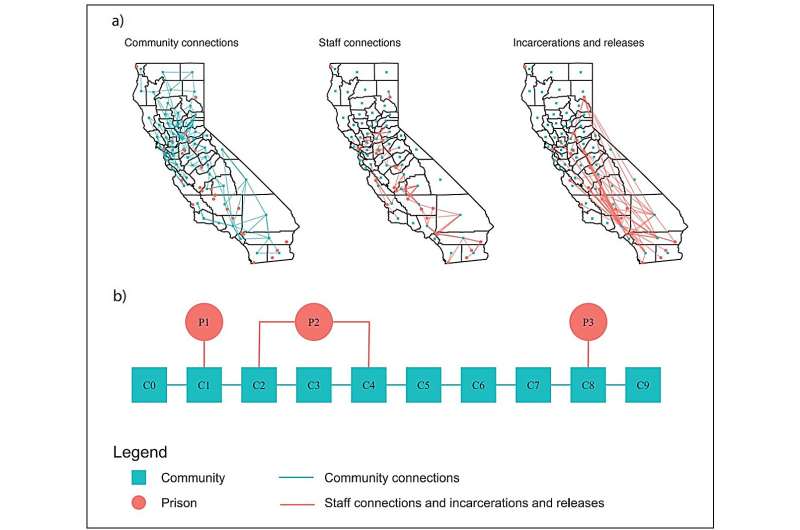Infectious diseases can rampage through correctional facilities at alarming rates, with outbreaks cycling in and out of surrounding communities and potentially spreading further to more distant communities.
Despite these connections, communities and prisons rarely coordinate their efforts to control outbreaks. So, Stanford Health Policy researchers conducted a study examining different ways to better protect both populations.
The researchers built a computer model to simulate how an infectious disease spreads between communities and correctional facilities. They tested several ways to control the spread of disease, including standard rules-based control policies and newer, AI-based policies developed using reinforcement learning (RL)—a form of artificial intelligence that learns through trial and error.

